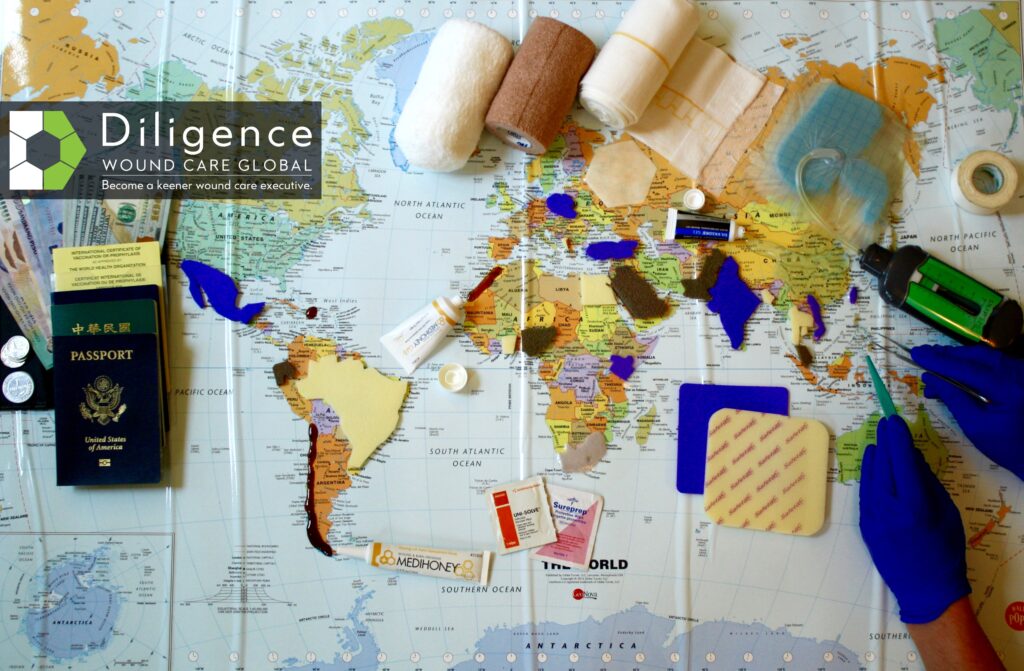The Case for Emerging Market Wound Care
Demographic and economic trends, combined with the sheer magnitude of the unmet needs in the emerging markets represents the largest untapped opportunity for advanced wound care products and services globally. Introduction As the business of advanced wound care in North America and Western Europe has boomed for the past two decades, most major wound care product and services firms, which are overwhelmingly based in those markets, have made comparatively little investment in the developing world. To be clear, the complex wound epidemic in the developed world is far from over, and it will remain a high growth healthcare opportunity for years to come. Yet trends such as new market entrants, insurance consolidation, increasingly cumbersome documentation requirements, and the commoditization and market saturation of certain product types, combined with overall pressures to cut healthcare costs, have at a minimum impacted per-unit/per-patient profitability in the West, even as the total market size continues to soar. Emphasis on prevention, bundled payments, and other risk-sharing trends on the horizon will further challenge the lucrativeness of wound care in the developed markets. At the same time, aging populations, wound-related comorbidities, and increasing purchasing power and overarching demand for advanced healthcare in the emerging and frontier markets have created tremendous opportunities for specialized wound care in these regions. Of course, unique challenges and obstacles exist as well. Still, demographic and economic trends, combined with the sheer magnitude of the unmet needs in the emerging markets represents the largest untapped opportunity for advanced wound care products and services globally. In line with this, greater than 50% of our 2016 engagements and related advisory at Diligence Wound Care Global involved the emerging and frontier markets. This trend has continued into 2017 as well. In this article, we will explore: The current state of advanced wound care across the developing world. Global demographic and financial data, cultural-religious considerations, and real-world, on-the-ground international wound care experience and information I have gathered from my wound care colleagues and during my extensive travels. The reader will gain a keener appreciation of evolving opportunities for wound care (and other healthcare) executives, specialists, startups, and investors. Why look to the emerging markets for wound care? With between 6 to 7 million complex wounds, estimated market sizes of between USD $8bil to $15bil for advanced wound care products, and $40bil to $60bil for wound management-related services in the United States alone (depending on which specific wound etiologies, products, and services are included), why should executives and investors even consider placing valuable resources in the emerging and frontier markets? The following figures provide an answer: 1. Population size and distribution 2. Overweight, obesity, and other malnutrition As if overweight and obesity were not enough of a challenge, due to evolving demographic, economic, and cultural factors affecting diets (e.g. urbanization, a shift to processed foods, etc.), many emerging markets have simultaneously overweight/obese yet undernourished populations. The lack of protein, micro-nutrients, and other consequences–even as average BMIs soar–is yet another comorbidity associated with delayed wound healing. This phenomena is well-documented in the 2016 World Bank paper, The Double Burden of Malnutrition in East Asia and the Pacific: Evidence and Lessons for a Multisectoral Response. 3. Diabetes 4. Kidney disease 5. Smoking Despite an overall reduction in smoking across the developed markets, 80 percent of the world’s 1 billion smokers are in low and middle income countries (WHO), with double-digit increases in smoking rates across dozens of developing nations. Indonesia alone is home to 70 million smokers, a nearly 30 percent increase over 15 years. During the same period, the percentage of Jordanian smokers rose from 25 to 40 percent. Similarly, rates in Bahrain rose from 12 percent to almost 30 percent, and in Cameroon from 7 percent to 22 percent. The CDC reports that overall, smoking in the developing world is increasing at a rate of 3.4 percent annually. As anyone who has worked in wound care services knows, smoking (and the resulting cardiovascular and pulmonary complications) is one of the most difficult clinical challenges faced by the wound care provider. While for most patients (in theory), wound bed moisture can be balanced, microbial counts (infections) reduced, albumin/pre-albumin levels raised, and blood glucose controlled, the damage that years of smoking does to the body’s ability to deliver oxygen required by healing tissue is extremely difficult to reverse in both the short and long terms. Noninvasive therapies to improve tissue perfusion are only effective if there is a certain amount of underlying vascularization. Yet invasive revascularization procedures are both medically complex and financially costly. In this sense, the colossal, growing rates of smoking in many of the world’s developing nations simultaneously contributes to both the clinical challenges and business opportunities for advanced wound care in these markets. The connection to chronic wounds Thanks to firms such as Net Health, it is possible to access real-time data comparing the effects of both individual and multiple comorbidities on wound healing. Such data is sourced from hundreds of thousands of wound outcomes across hundreds of US wound care centers. The following figures show that the chronic diseases and related factors that plague the developing markets are precisely the ones that have the most profound impacts on delayed wound healing: The comorbidities found to have the most acute impacts on patients in the US are also the most prevalent and fastest growing conditions in the emerging markets. Clearly, from the perspectives of both absolute and relative population sizes, as well as factors associated with non-healing wounds, the current and future needs in the developing world are immense. As we will see, despite these figures, specialized wound care in these regions has traditionally been the focus of disproportionately low levels of investment. We will dive deeper into just how massive the opportunities are in future articles and posts. Wound care products and services: “Chicken-and-egg?” Which should come first–emerging market wound care products, or services? Having been first introduced to advanced wound care in the developed markets (as a director for a leading wound management firm), I had always been exposed to a plethora
The Case for Emerging Market Wound Care Read Post »





